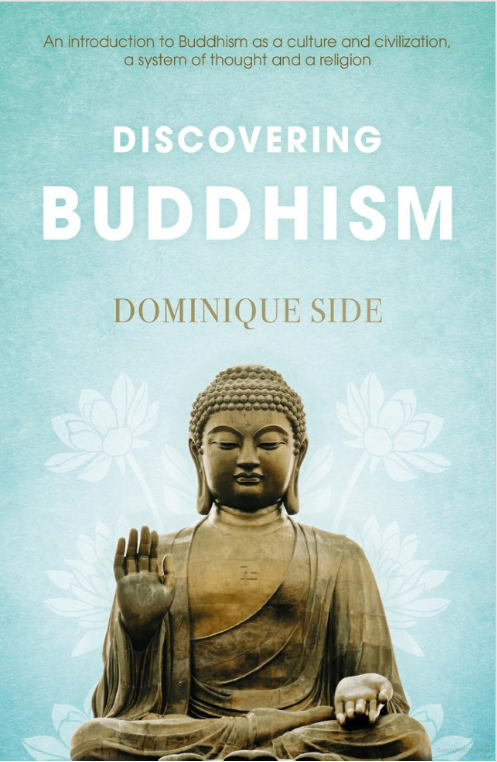When I was an undergraduate student, having just begun my foray into the study of religions, one of the books I referred to most often was Peter Harvey’s book, An Introduction to Buddhism (1990). Compare Harvey’s book to Rupert Gethin’s later Foundations of Buddhism (1998). Foundations is not fundamentally different from Harvey’s in the content it purports to introduce readers to. Yet the structure of the book, as well as the critical-historical perspective that informs Gethin’s priorities, were more sophisticated than Harvey’s. If authorial background and intentions matter in presenting an introduction to Buddhism, then this supposedly simple goal turns out to look more complex, with introductions ending up being quite diverse. Such books on Buddhism might not vary greatly in content, but can be distinct in approach and methodology.

Dominique Side, a teacher of Buddhist practice and published author, approached her task of writing an introduction to Buddhism as a teacher of over three decades; in other words, the book is pedagogical. It functions as a critical textbook that contextualizes the Buddhist tradition in history while allowing it to speak for itself. Side’s unpacking of the Buddhist tradition is perhaps the simplest in format – 25 chapters, with no grouping of said chapters, each chapter focusing on a straightforward topic: for example, “Chapter 9: The Four Noble Truths,” “Chapter 16: Society and the Buddhist Way of Life,” “Chapter 23: Religious Authority,” and so on. It is a return to basics. Each chapter ends with a point for personal reflection, before being summarized with a section on the main points of the chapter.
The personal reflections are particularly useful for learners seeking to apply the knowledge acquired in the chapter. For example, in “The Three Refuges” (Chapter 14), Side’s personal reflections for the reader are: “In times of difficulty and challenge, what do you usually turn to as your refuge? What motivates anyone to take refuge in a spiritual path?” (232) This combines the intellectual dimension with that of the seeker. Side is mindful of who might be reading the book: it could be a Buddhist, but it might well be a general seeker that has had little exposure to traditional Buddhism. The best introductions to Buddhism have perfected the art of simplicity while also making it clear in no uncertain terms that there is much more to explore should one choose to do so.
Side is, necessarily, brief and concise. For example, the period of European colonialism in “A Brief History of Buddhism” (Chapter 4) is less than two pages. “Meditation in Pure Land Buddhism” in the chapter on Pure Land Buddhism is similarly brief. In some ways this brevity can be even more difficult than being comprehensive – without recourse to extensive footnotes and mightily constrained word counts, one must provide a summary that captures the general picture that is also, at the same time, nuanced and allows for the diversity of interpretations that exist.

Side’s book is a no-frills and straightforward door into the Buddhist world, inviting participation and engagement on the student’s terms while providing some thought-provoking questions that will guide them deeper in their direction of choice. While the information within is not particularly new or “groundbreaking,” introductions to Buddhism are not intended to be so; in fact, the more basic and no-nonsense the delivery of what is generally agreed to be “the religious tradition,” the better. I remember the sophistication of Gethin’s 1990 book being at once a strength and a shortcoming. While it prompted me to think in a much more multifaceted ways in which a student could understand Buddhism’s history, I do not at all remember many segments which would be easy to summarize. Side’s book, on the other hand, is much more easily “digestible” in how it presents the foundation information.
Unlike Gethin and Harvey, whose introductions to Buddhism I was exposed to as a student, Side provides a slight twist by investing the student in thinking about what basic Buddhism means for them. This is not just a book for the Buddhist Studies learner. It is an introduction fit for today’s curious seeker of knowledge of Buddhism’s ancient faith.
Reference
Dominique Side. 2022. Discovering Buddhism. Leicester: Troubadour Publishing
See more
My Writing (Dominique Side)
Related news from BDG
Windows into Buddhism: Khyentse Foundation Announces Launch of New Book and Website


